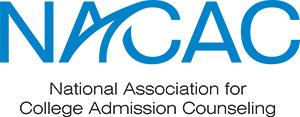The Mean Girls movie just celebrated its 17th birthday on April 30th, and it’s going off to college this fall like many of you. (In other news, I feel OLD.) This is one of my all-time favorite movies, and I think it really holds up after all these years—but not necessarily in the ways you might think. Does it parallel as a precise framework for the college search process and your subsequent college experience? Well, no. (Hopefully not!) But do some of its iconic one-liners provide indirect, lighthearted (and non-exhaustive!) advice for the process? I think so, and I’ll show you how. Get in loser; we’re going shopping!
The Shopping Phase
...Speaking of that line, this is the perfect place to start. It can be helpful to think of this process in terms of which phase you’re in—shopping, browsing, or applying—and know that this can be an ongoing process over several months (or even years). If you were looking for the perfect outfit for a special occasion, you wouldn’t just buy the first thing you saw in the window of the first store you stepped into, would you? You would want to take your time and be thoughtful, making sure you visited several stores to find exactly what you’re looking for. You’d want to compare style, fit, and cost. (See how similar this is to shopping for a college?) This mentality is the same for the college search process—give yourself permission to take time shopping. I personally think the “shopping” phase of the search and application process is the most fun. That may be my biased opinion as a college counselor, but I’ve never heard a student say their favorite part was sitting for the SAT. (But, hey, you do you!) There are so many resources at your disposal to research schools, including books, websites, podcasts, and even social media accounts, to say nothing of the college websites themselves. Campus visits are also a great way to “try on” a school and see if you can envision yourself there. (Check out this blog post with tips on visiting colleges in-person and virtually.) Take a deep breath and don’t rush the shopping phase. You want to give yourself time to start thinking about what you’re looking for in a college—both the school itself and your experience there. And the truth is, if you’re not applying Early Decision anywhere, you’re technically still shopping until April of your senior year. It’s a good idea to start thinking broadly about this now, but don’t feel like you need to know exactly where you want to apply just yet.
“I’m sorry that people are so jealous of me. But I can’t help it that I’m popular.”- Harvard, probably.
Harvard and its small cadre of peer schools consistently tout the lowest admission rates every year. This is a good place to remind folks that admission rates are little more than a simple math problem: the number of applications divided by number of students admitted equals the admit rate (or selectivity). For schools with fixed incoming class sizes, as the number of applications increases, the admit rate will fall. And that, dear reader, is the extent of my math skills and what led me to be an English major in college. Don’t conflate “popular” with a specific value. Remember, every year there are books that make the bestseller list because a lot of people buy them—not necessarily because they’re well-written (I’m looking at you, Twilight) or that you would be interested in reading them.
“On Wednesdays, we wear pink."
When you’re researching schools, you might consider what school spirit looks like and what kind of student atmosphere you want to be a part of. What are a school’s traditions? Maybe the school’s tradition is wearing pink on Wednesdays. Actually, years ago, Colorado College offered a comparative literature course focusing on women’s motives behind seeking authority roles, and the class discussed and dissected this portrayal in popular movies including Mean Girls. (And yes, they did wear pink on Wednesdays.) Maybe you’re excited by athletic traditions like at Ohio State where their famed marching band takes the field at halftime and spells out “Ohio” with the dotting of the i. Or maybe you prefer to experience a football game in the Big House at the University of Michigan, which holds about 110,000 fans and is the largest stadium in the country. (My colleague Arun and I disagree on which tradition is better, but we’ll keep our personal biases to ourselves.)
School spirit isn’t just reserved for athletic traditions. Maybe the Great Midwest Trivia Contest hosted at Lawrence University, considered the “world’s longest-running trivia contest” over an entire weekend, appeals to you. Or maybe you’re intrigued by NC State’s fundraising Krispy Kreme Challenge, where students run 2.5 miles to a Krispy Kreme, eat a dozen donuts, and run 2.5 miles back to campus. For more of these quirky trivia questions and why it’s actually a smart way to do research, read my colleague Ian’s post.
The Application Phase
“The limit does not exist.”
This is a trick question. Now that we've moved on to the actual application, it turns out that the limit does exist. It exists in both the essay word counts and in the activity list. (And if you’re working with one of our counselors, it exists in the number of colleges you will ultimately apply to.) But let’s talk about the application itself. If you’re applying through the Common App, the Personal Statement, which is the main essay that will be sent to all colleges you apply to on that platform, asks you to respond to a prompt in no more than 650 words. This is not a polite suggestion; the Common App will cut you off after 650 words. If you don’t want to leave your admission reader with a mid-sentence or mid-word cliffhanger, you’ll want to make sure that you edit your essay to fit within this word limit. I know it can be daunting to feel like you have to summarize your whole life in one 650-word essay—but the truth is that you don’t, nor could anyone ever expect you to do that. You are far too interesting! Instead, pick a specific story to focus on that you can tell in the limited space. If you apply to schools that have supplemental essay questions, note that those also have word limits, and they are often shorter than the Personal Statement. So be judicious!
I also mentioned that the activity list has a limit on entries—specifically, ten. This is not to cause you more stress or to try to strategize how to “game” the section based on what you think colleges “want to see.” You don’t have to fill all ten entries. Admission counselors can tell if a student filled the chart with “fluff” just to make it look like they were more involved than they actually were. I recommend being thoughtful about what you wish to include in this list; start with your most meaningful, impactful activities, and don’t feel pressure to fill the entire list. On the other hand, if you have more than ten activities that are meaningful to you that you want to include, know that you can always upload a resume or use the Additional Information section to include anything not captured in the activity list.
“It’s October 3rd.”
Name a more popular calendar date from a movie. While October 3rd is not a specific date in the college application timeline, it’s a good deadline to keep in mind if you’re thinking about applying Early Decision to any schools. ED application deadlines are typically November 1st or 15th, and an early- to mid-October submission date is a great target to aim for. It will give you enough time to follow-up on your application(s) to ensure the school has received all of the required materials. During my ten years in admissions, I can’t tell you how many times a student’s application was withdrawn without a decision because they thought they submitted all of the application pieces when, in fact, some of their materials were still incomplete. This is completely avoidable if you are ahead of the game. Save yourself distress by meeting—or even beating—deadlines.
Our hope is that you will work with your counselor to create a balanced college list made up of schools where you are likely to hear more “yes” decisions than “no,” and when you get your admission decisions back, you can look over your options (“Four for you, Glen Coco—you go, Glen Coco!”) and thoughtfully make your decision. Because ultimately ending up at a school that you are excited about is so fetch.
About Us: With more than twenty years of experience, Collegewise counselors and tutors are at the forefront of the ever-evolving admissions landscape. Our work has always centered on you: the student. And just like we’ve always done, we look for ways for you to be your best self - whether it’s in the classroom, in your applications or in the right-fit college environment. Our range of tools include counseling, test prep, academic tutoring, and essay management, all with the support of our proprietary platform, leading to a 4x higher than average admissions rates.



.png?width=600&height=200&name=Blog%20CTAs%20(7).png)



